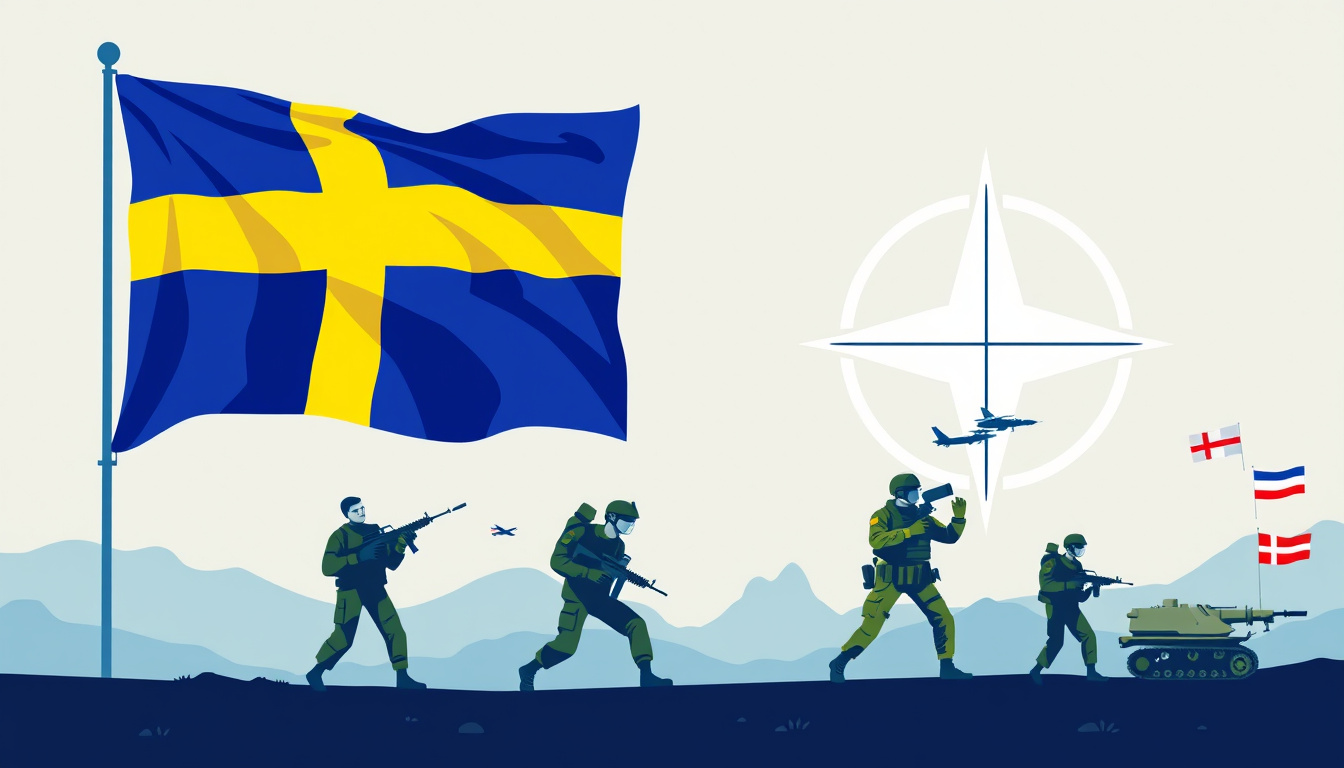Sweden’s decision to join NATO in 2024 marks a significant pivot for the Nordic nation, once known for over 200 years of military neutrality. This transformation has been catalyzed by the geopolitical shifts following Russia’s full-scale invasion of Ukraine in 2022. The event not only altered Sweden’s defense posture but also reshaped the dynamics of European security and NATO’s collective strategy.
A Strategic Shift
Historically, Sweden with its population of approximately 10.5 million has maintained a stance of military non-alignment, focusing on dialogue and cooperation rather than direct participation in military alliances. However, the stark reality of Russian aggression revealed vulnerabilities, prompting Sweden to seek the collective security that NATO membership offers. As Sweden raised its flag over NATO Headquarters in Brussels, it officially became the alliance’s 32nd member, ready to assume shared responsibilities while contributing to the collective defense efforts.
Contributions to NATO
Sweden brings significant strategic advantages to NATO, not least of which are its geographic position and advanced military capabilities. Its long coastline along the Baltic Sea and proximity to the Arctic make it a critical player in Euro-Atlantic security. With extensive experience in maritime operations, Sweden’s navy, including advanced ships like the Visby-class corvette, is uniquely suited for Baltic operations. These stealth vessels, designed for multiple roles ranging from submarine hunting to air defense, reflect Sweden’s commitment to cutting-edge defense technology.
Additionally, the Swedish Amphibious Corps specializes in coastal defense, adept at navigating the intricate archipelagos that shape Sweden’s coast. Their expertise in local terrain enables them to effectively secure the vast 3,200 kilometers of Swedish coastline, providing NATO with a robust defensive posture.
Air and Land Operations
Sweden’s advanced Air Force, equipped with Gripen fighters, enhances NATO’s aerial capabilities. Known for their agility and operational versatility, these aircraft are complemented by innovative strategies that include utilizing civilian infrastructure for military purposes. The Norrbotten Brigade, trained specifically for Arctic warfare, ensures Sweden’s land forces can engage effectively in harsh northern climates, thus reinforcing NATO’s deterrence strategies in the High North.
The Gotland Element
Gotland, often referred to as the Baltic Sea’s "unsinkable aircraft carrier," serves as a crucial strategic asset for NATO. By integrating Gotland into NATO’s operational framework, it becomes a potential hub for logistics, maritime operations, and intelligence-gathering missions, enhancing security across the region and supporting the Baltic States against any external threats.
Technological Leadership
Sweden is not only enhancing NATO’s traditional military capabilities but is also advancing in space and technology. The Esrange Space Center, a leading European facility for satellite operations and atmospheric research, is pivotal for NATO’s defense strategies. In the modern battlefield, where communication networks may be compromised, satellite technology ensures that NATO forces maintain situational awareness and operational readiness.
A Collective Future
Sweden’s entry into NATO signifies more than just an increase in military membership; it represents a collective commitment to mutual defense against threats to European stability. The nation’s experience with sophisticated military hardware, combined with its geographical insights, adds layers of resilience to NATO’s operational effectiveness.
By joining forces with 31 other Allies, Sweden solidifies its security and reinforces the principle that collective defense is essential in an increasingly complex global landscape. The ongoing developments in the Baltic and Arctic regions illustrate Sweden’s pivotal role within NATO, as the alliance grapples with evolving security threats.
Conclusion
In summary, Sweden’s transition from military neutrality to NATO membership reshapes the future of the alliance and enhances collective security in Europe. As Sweden contributes its unique capabilities and strategic position, it not only bolsters NATO but also embraces the shared responsibility and solidarity that comes with being a part of this historic defense alliance. The transformation signifies a resolute commitment to peace and stability in the face of new challenges, heralding a new era in European defense collaboration.
Ready to get in the game and start making money on Pump.fun? DogWif Tools is the #1 memecoin sniper tool for becoming a Pump.fun millionaire. Get DogWif Tools today and become a memecoin dev!








